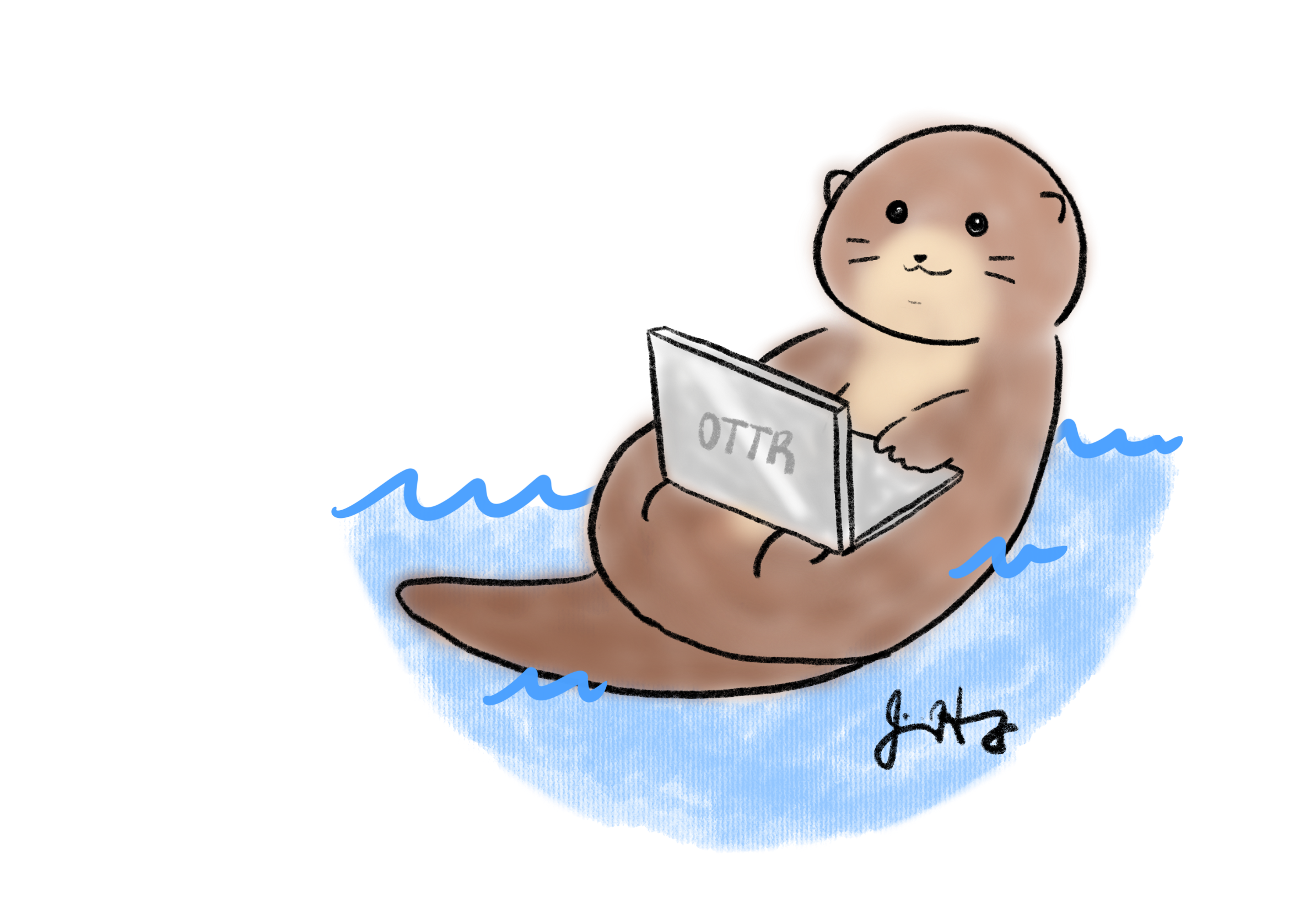Start creating website
Now you have a repository on GitHub and you’re ready to start crafting your website!
The OTTR content development process revolves around the use of pull requests! Pull requests are a way to set up proposed changes (instead of direct changes) before you publish them. They enable OTTR to test your proposed changes for potential issues such as broken URLs or spelling errors. Importantly, pull requests facilitate discussions with others regarding proposed changes.
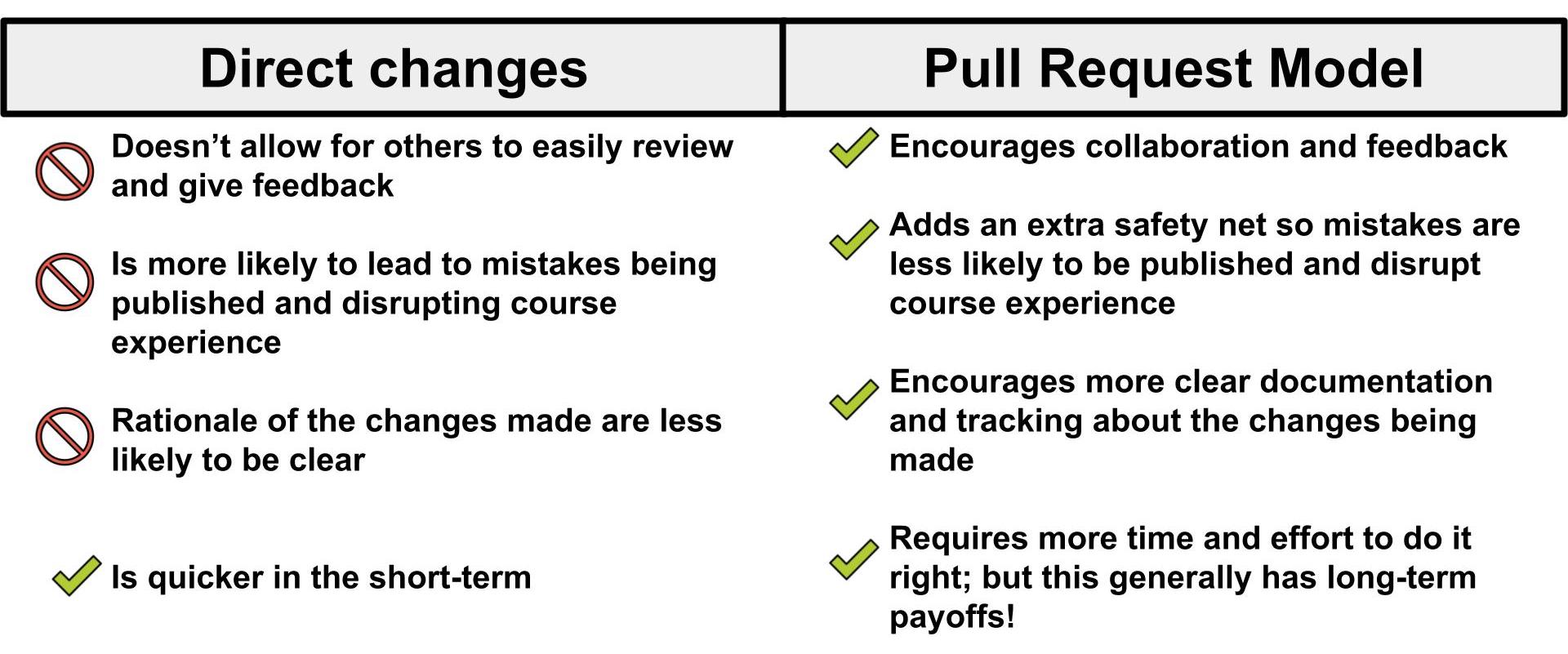
WARNING: The live content is automatically created and
stored in the docs folder. As our writing process guide
will inform you, you should NOT make direct changes to the
docs folder. The automation processes will handle
the preparation of these files, and you should refrain from making
direct changes to them. To learn how to edit your files and personalize
your website, please review the corresponding section in the writing
process guide.
About OTTR and Pull Requests
OTTR will not completely break if you don’t use pull requests, but you will be missing out on a lot of the main perks of OTTR. OTTR’s checks primarily focus on pull requests so you can avoid accidentally making your mistakes in your live website.
When you submit a pull request on OTTR it triggers a sequence of automatic checks performed by GitHub Actions. These checks are designed to assist you as you add content to your website.
These checks will:
- Check that the all the URLs actually take learners somewhere
- Check that the code is styled using the
stylerpackage - Check that the spelling is correct using the
spellingpackage - Create previews of the rendered versions of the website
- Check the formatting of any quizzes (if applicable)
You can adjust what checks are run by editing the
config_automation.yml file. This is further discussed in
this section about customizing GitHub
Actions.
We have two recommended ways of writing content that is based on your comfort and interest level in using Git and GitHub. If you are already comfortable with GitHub you can skip these parts.
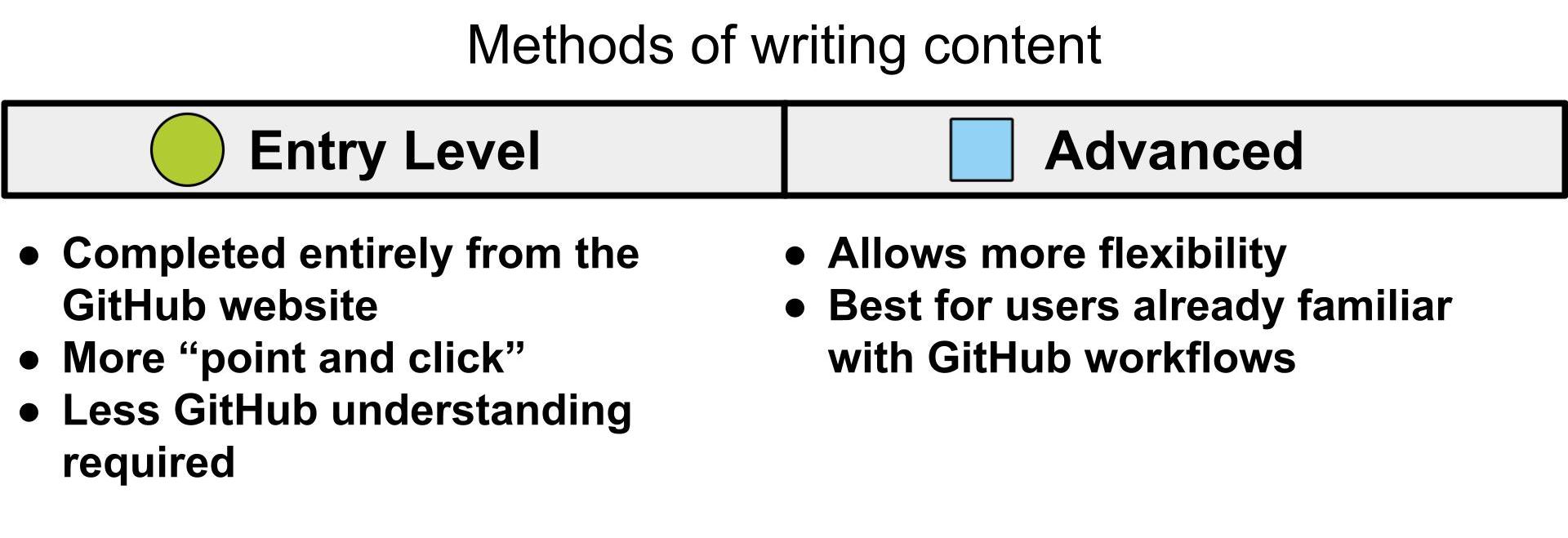
Get started with OTTR entry level – editing from the browser: If you are not interested in delving into GitHub, you can use this version, which is entirely conducted through the GitHub web browser.
You can edit and add content directly in the GitHub website if you prefer not to learn Git and GitHub (though we highly recommend it, as knowing how to use Git/GitHub is a useful skill to integrate into your workflow – not just for OTTR).
1. Create a new branch
With GitHub in order to keep your OTTR website preserved content and
code is managed through the use of branches. To explain branches we’ll
mainly refer to two branches: your main branch:
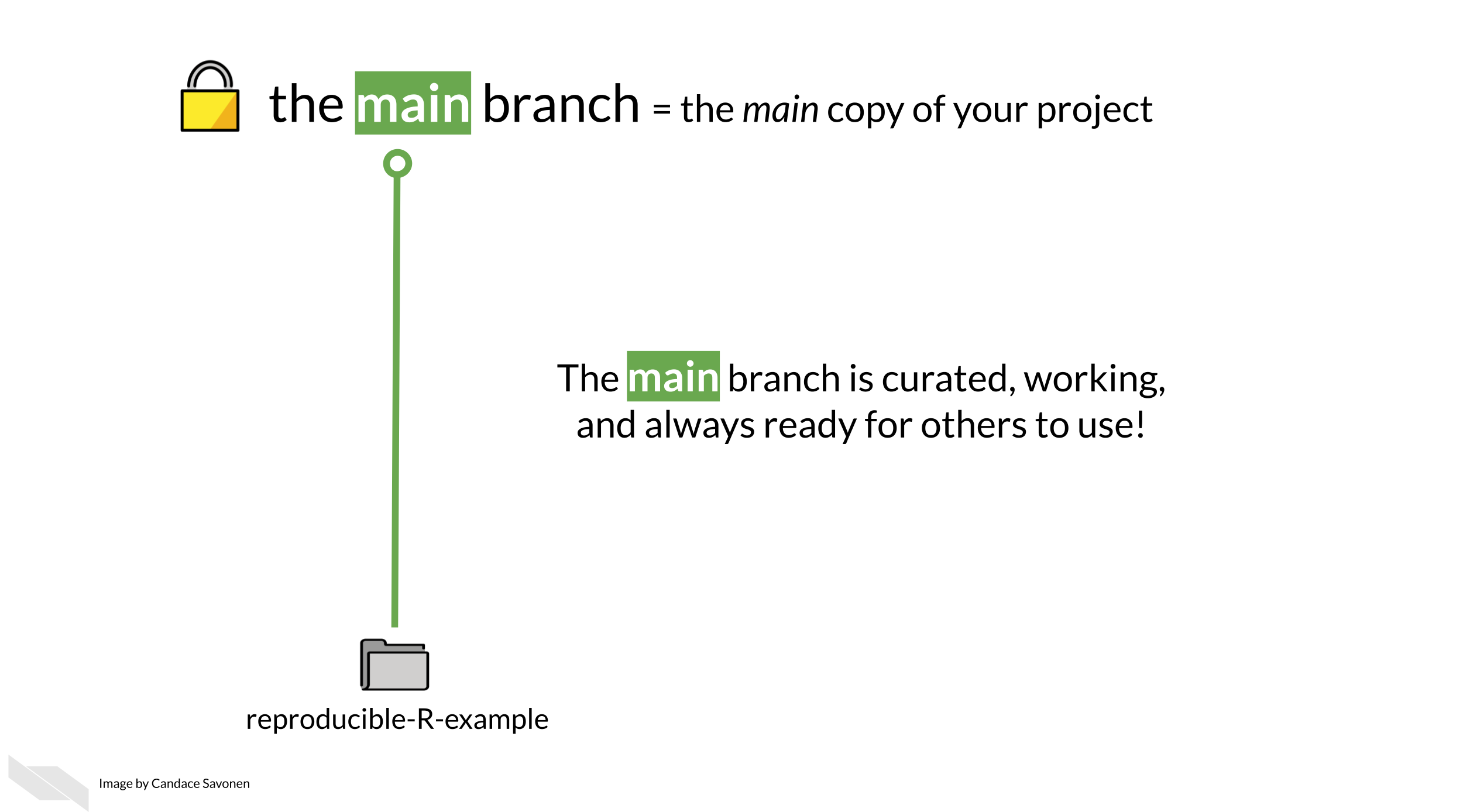
The main branch is what your content will be published
from and it will be live to any visitors to your website. You will want
to keep this main branch as preserved and well curated as
possible!
So when you are ready to add more content you will want to have an isolated copy of your files to work from that keeps your main branch safe as you work. You can name the branch you work from whatever you like – its recommended you name it something related to the changes you are working on
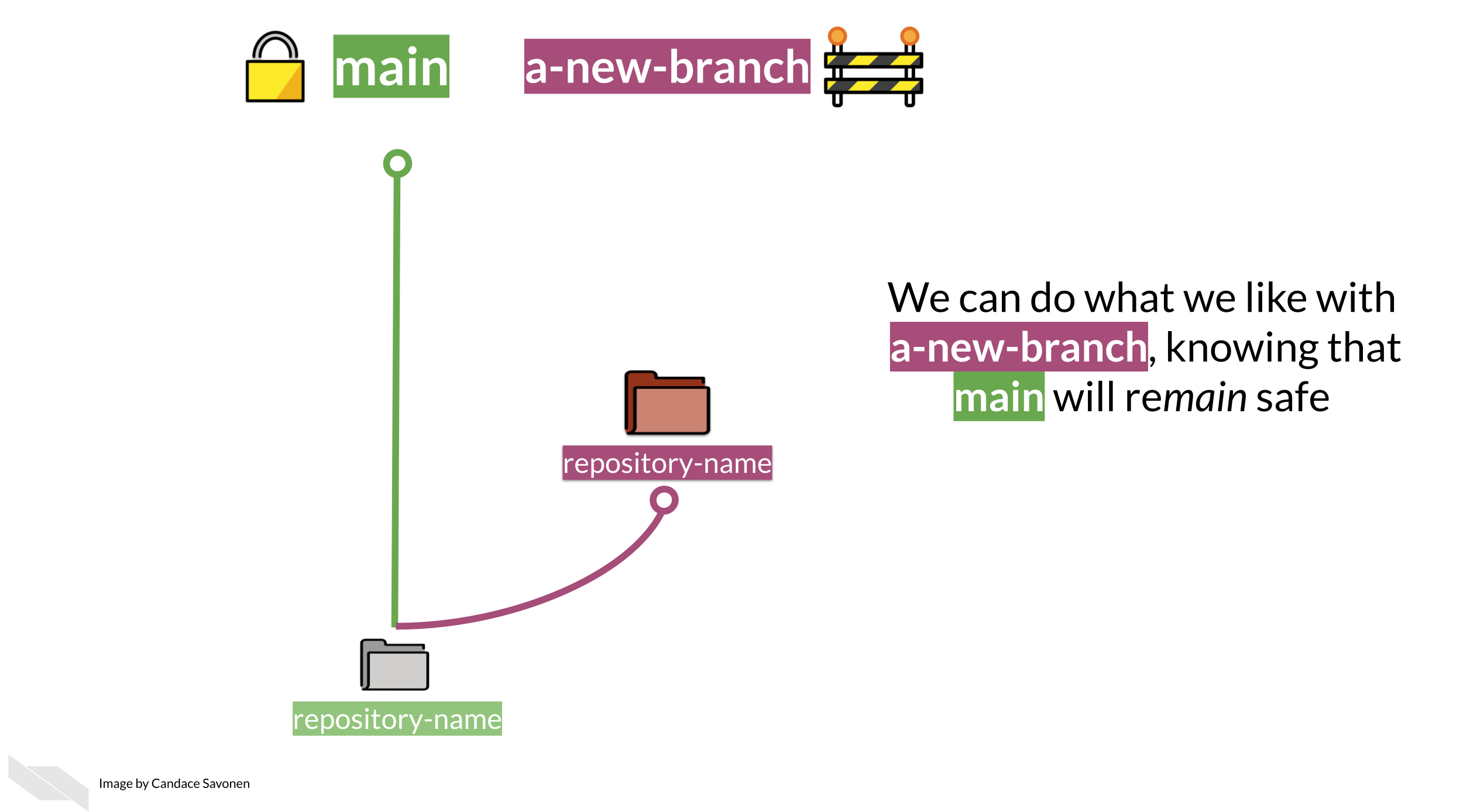
To create a new branch through the GitHub website, you will go to
your main repository page, click on the branch changing button that says
main.
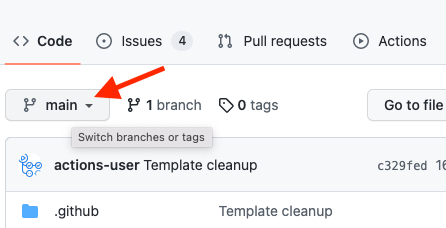
Type in a name for your new branch; something that relates to the
changes you are making. For the purposes of this example, we’ll call
this new branch, a-new-branch.
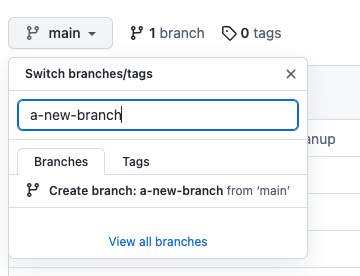
Then click Create branch: new-changes from main.
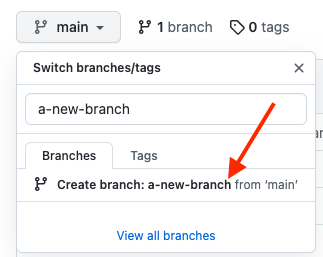
Congrats! You’ve made a new branch. GitHub will automatically show
you your new branch’s files (which have been copied from the
main).
You can tell that you are on the new branch as the left corner branch
tab now says the name of our new branch (a-new-branch).
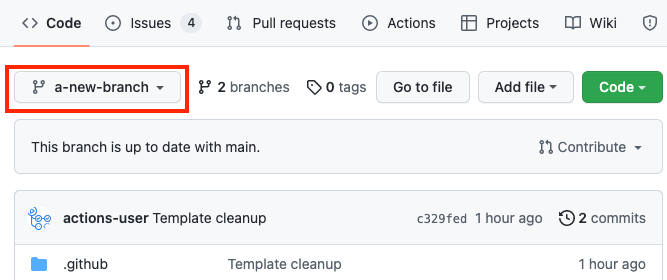
Now that we have a copy of all the files from the main
branch, we can safely work on them in the a-new-branch
branch.
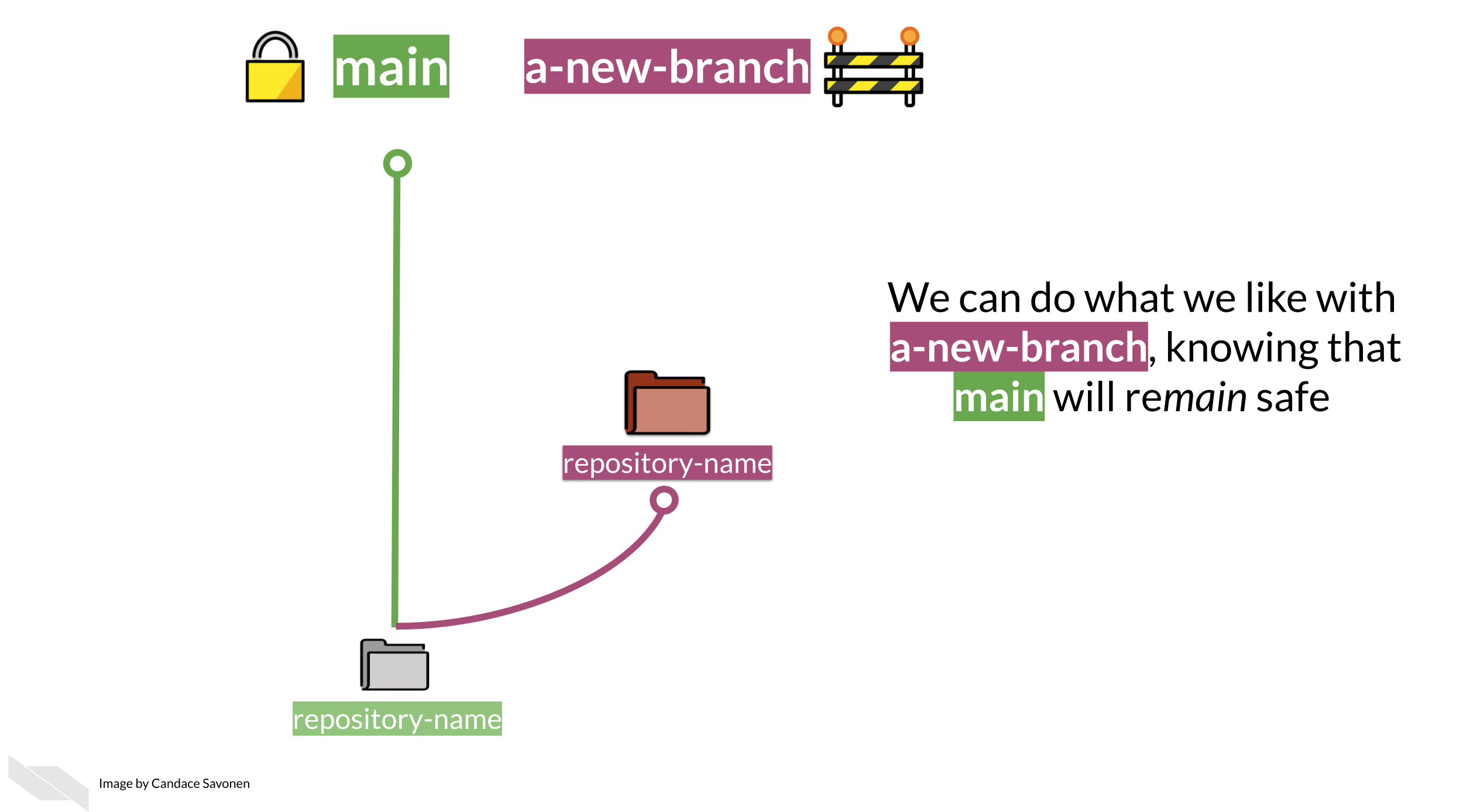
Whenever you are making changes, you’ll want to check that you are on your new branch in order to add any new changes to your pull request, just look at the left upper corner to make sure!
Now let’s try making some changes.
2. Committing changes
In your OTTR repository, on your new branch, you can now
add/edit/rename currently existing files while protecting your
main branch. Adding changes to a branch is called making
commits.
We will describe how to edit existing files below, however, GitHub has great information about how to create and remove files. Additionally GitHub is always making changes, so if our instructions seem out of date, definitely checkout GitHub’s current documentation:
After every edit you make, scroll down and make sure that you choose
Commit directly to the new-changes branch.. This will add
your changes to the pull request and thus allowing for these changes to
be run through the OTTR checks.
Then click Commit changes. You will need to do this
after every change to add them to your branch.
As an example, we will show a simple change to the file called
index.Rmd. Scroll down to the this file and click on this
file name.
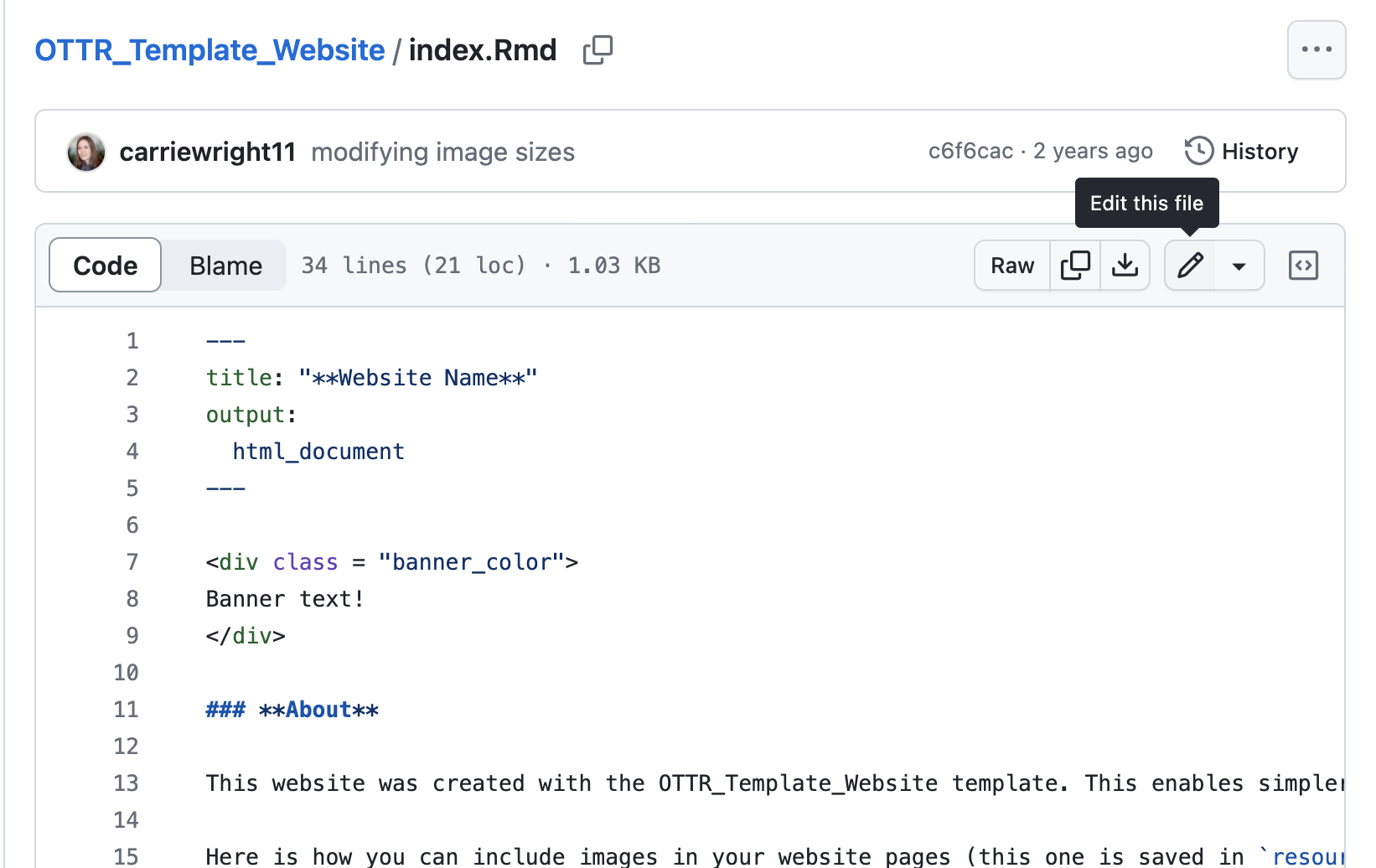
Now click on the edit button to make a change. Notice that it shows what branch we are working on.
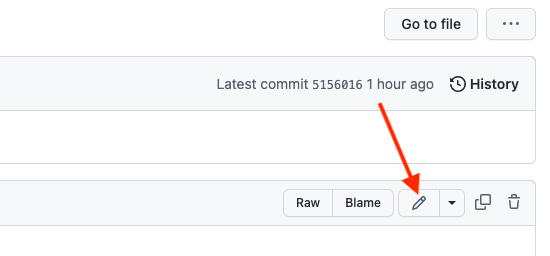
Make an edit, to this file. Maybe by putting in your own website title!
You can preview how it looks by pressing the
Preview changes button. Red will indicate new deletions and
green will indicate new additions.
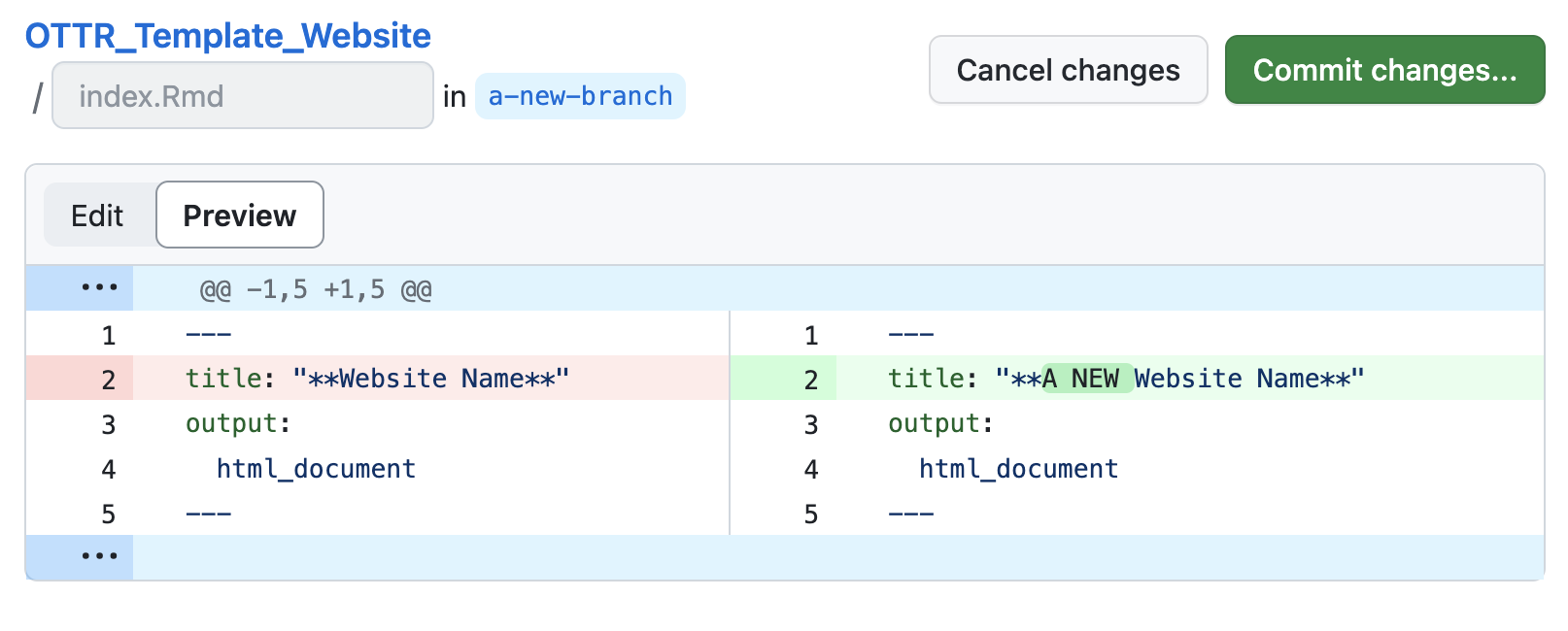
Then write a message about what changes you made and press the
commit changes button.
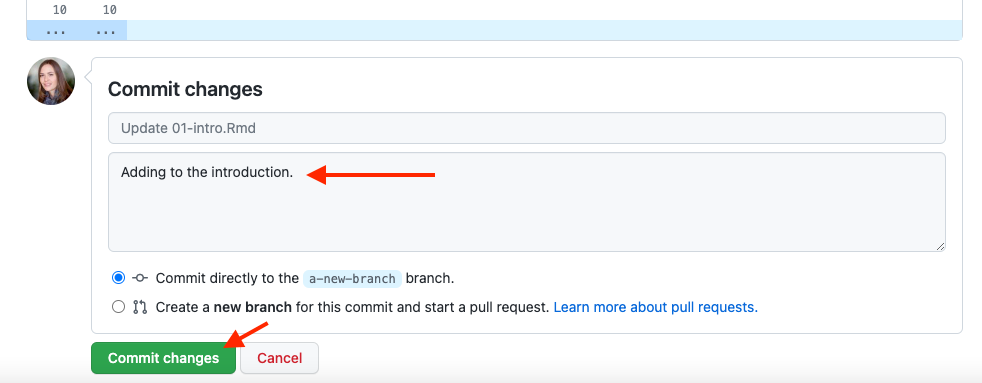
Now you are ready to open your pull request.Jump to section titled ‘Open a Pull Request’
Get started with OTTR Advanced – filing a PR from your computer: If you are already familiar with Git and GitHub or have an interest in starting to use them, we suggest this method. It will involve some additional learning, but acquiring skills in Git and GitHub will be highly beneficial not only for OTTR but also for version control in various other contexts.
If you have an interest in utilizing GitHub (or already possess knowledge in this area), we suggest engaging with GitHub and Git beyond the GitHub website for creating your pull requests.
If you are new to Git and GitHub, it is recommended you use a Git client to help you manage your branches more easily. Install GitKraken for a handy way to manage your website locally. These steps shown here will show you the GitKraken way of handling files.
If you are not new to GitHub, then we recommend skipping this section
and jumping to the Checks on the Pull Request
section.
1. Cloning with Git
In the GitHub workflow (excluding the Entry-Level writing method), files exist online (remote) and on your computer (local).

You will need to clone the website repository to your
own computer. Having a local copy of the files you are working from
makes it easier to work from. Cloning is just making a local copy on
your computer of the remote version of the project on GitHub.
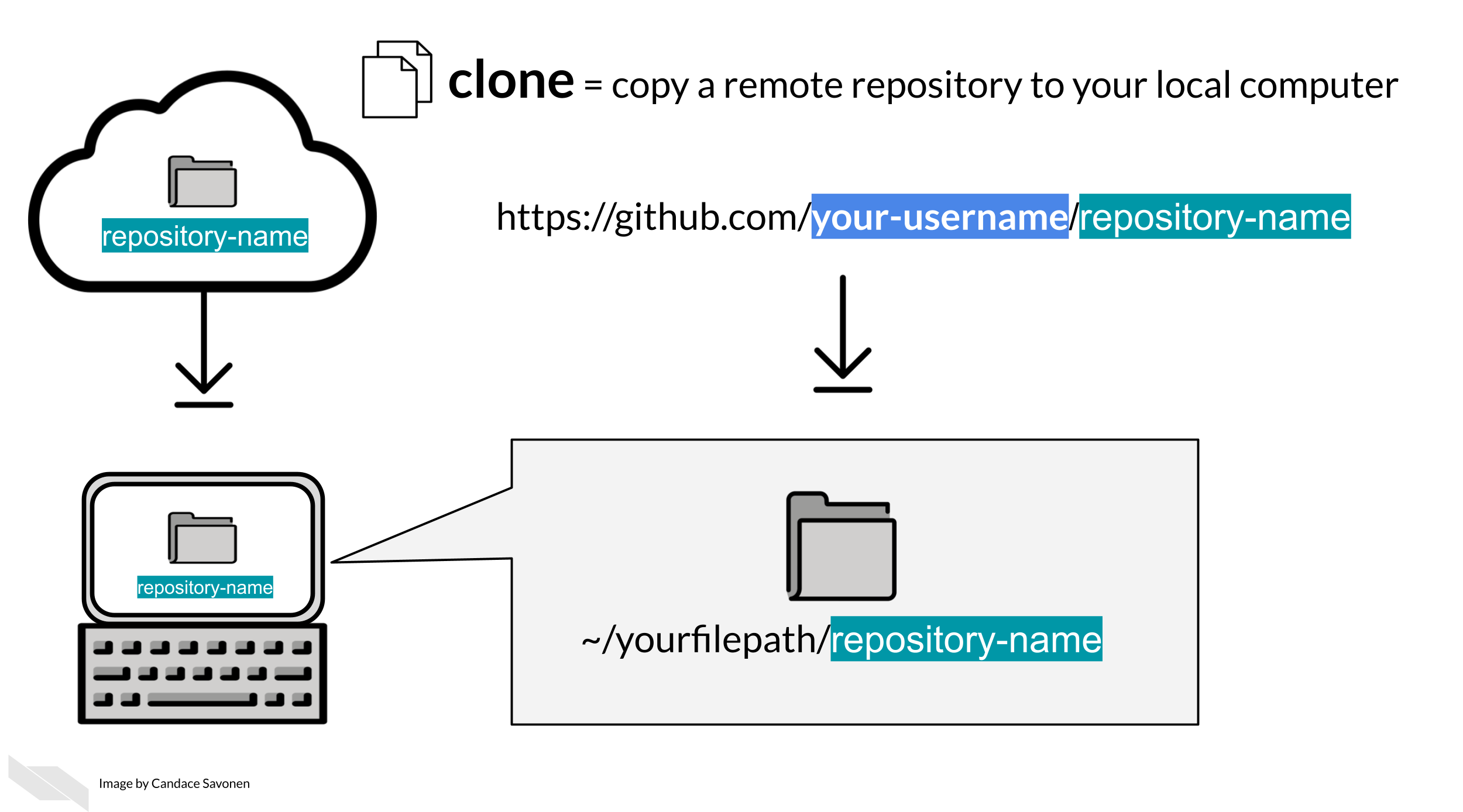
To get started, you will need to clone your website’s repository that you created, as you will be using it for the duration of writing your website.
To clone a GitHub repository, using GitKraken, first, click
Clone a repo. Then, choose where you’d like the repository
to be on your computer using the Browse button. You will
need to Copy + Paste your new repository’s url to where it
says URL.
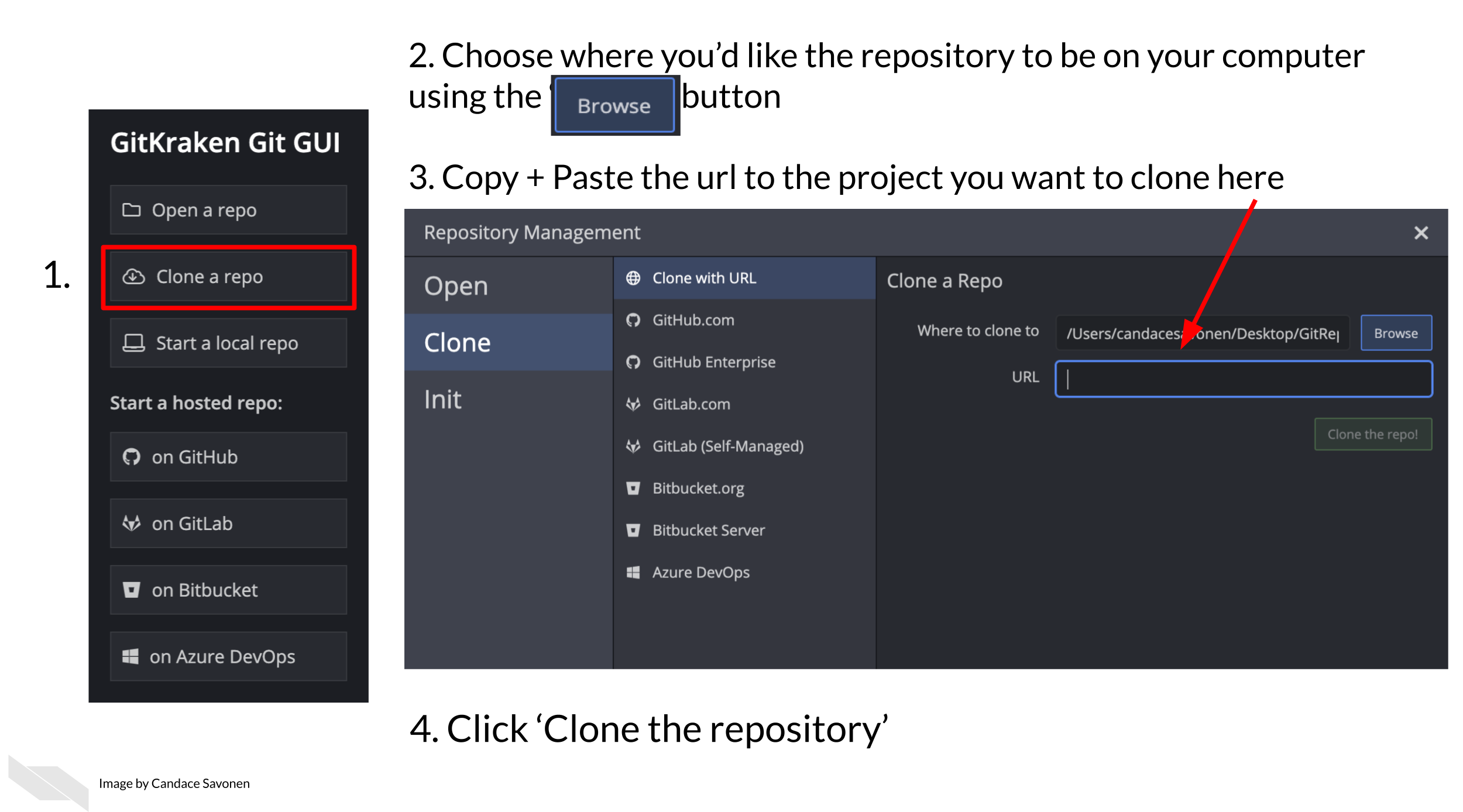
Navigate to your repository on GitHub to copy the URL. Copying and pasting is advisable because any little typo will inhibit cloning.
Now you are ready to click Clone the repository! It will
ask you if you’d like to Open Now, click that.
2. Create a new branch
Handling branches is where you unleash the real benefit of GitHub, but it can be confusing at first.
In GitHub, preserving the content and code of your OTTR website is accomplished through the utilization of branches.
To explain branches we’ll mainly refer to two branches: your
main branch:

The main branch is what your content will be published
from and it will be live to any visitors to your website. You will want
to keep this main branch as preserved and well curated as
possible!
So when you are ready to add more content you will want to have an isolated copy of your files to work from that keeps your main branch safe as you work. You can name the branch you work from whatever you like – its recommended you name it something related to the changes you are working on
The best way to get a grasp of what the branches represent is to create one and start using it.
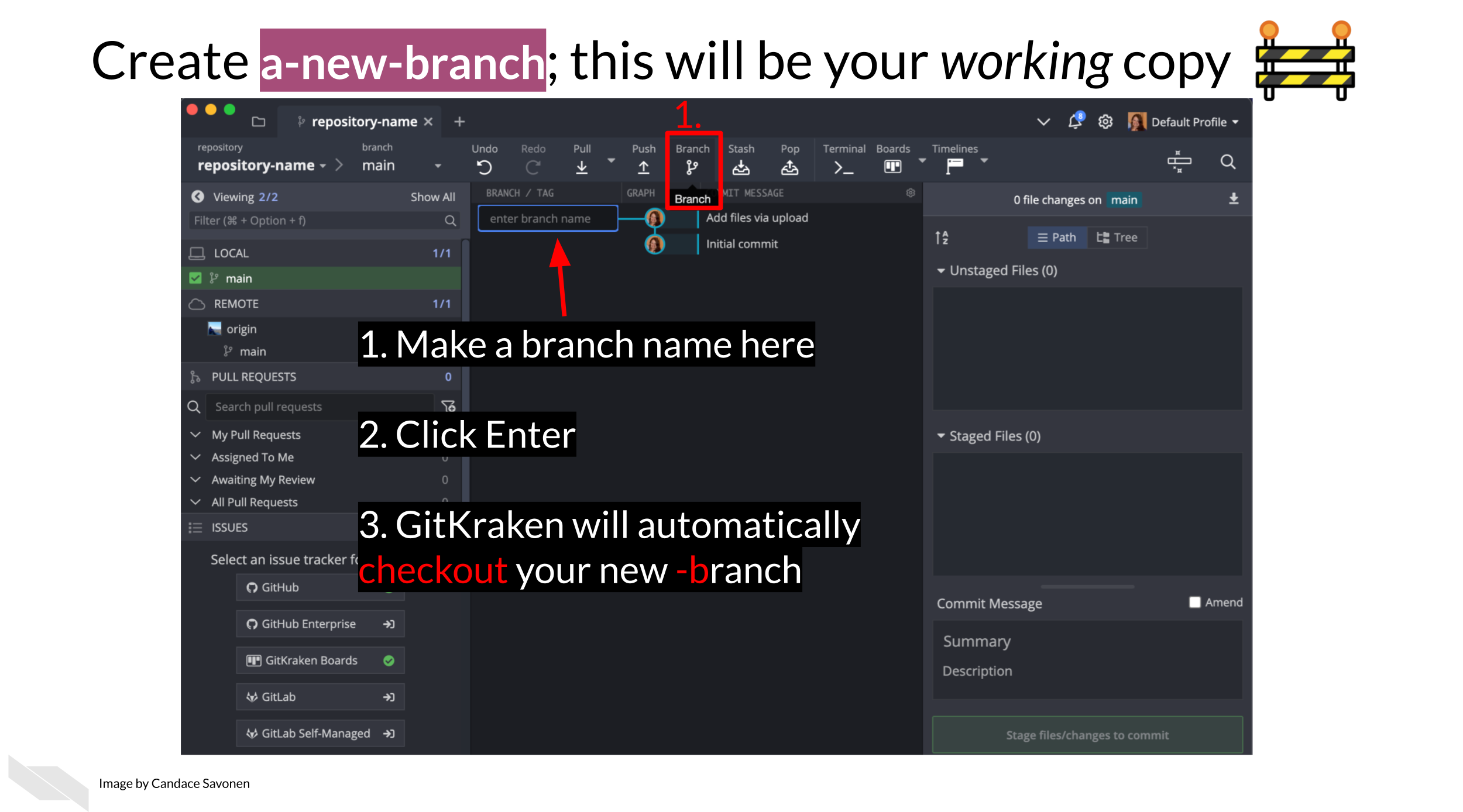
In GitKraken we can create a new branch; this will be your working
copy. First, click the Branch button. Next, type in a
branch name in the box that the cursor is blinking in. In our example,
we are calling it a-new-branch. Now click
Enter! Now you have a new branch!

Now we can add/edit/rename currently existing files in our new
branch, knowing that the content and code in the main
branch is safe.
3. Committing changes
Adding changes to a branch is called making commits. To
modify any files in a branch we have to first 1) Make our changes as we
normally would and then 2) Commit those changes.
To commit changes, begin by editing a file using your preferred text editor. You can simply double-click a file locally to open it. For this example, the specific change you make doesn’t matter much; it can be a small modification that you will easily notice later.
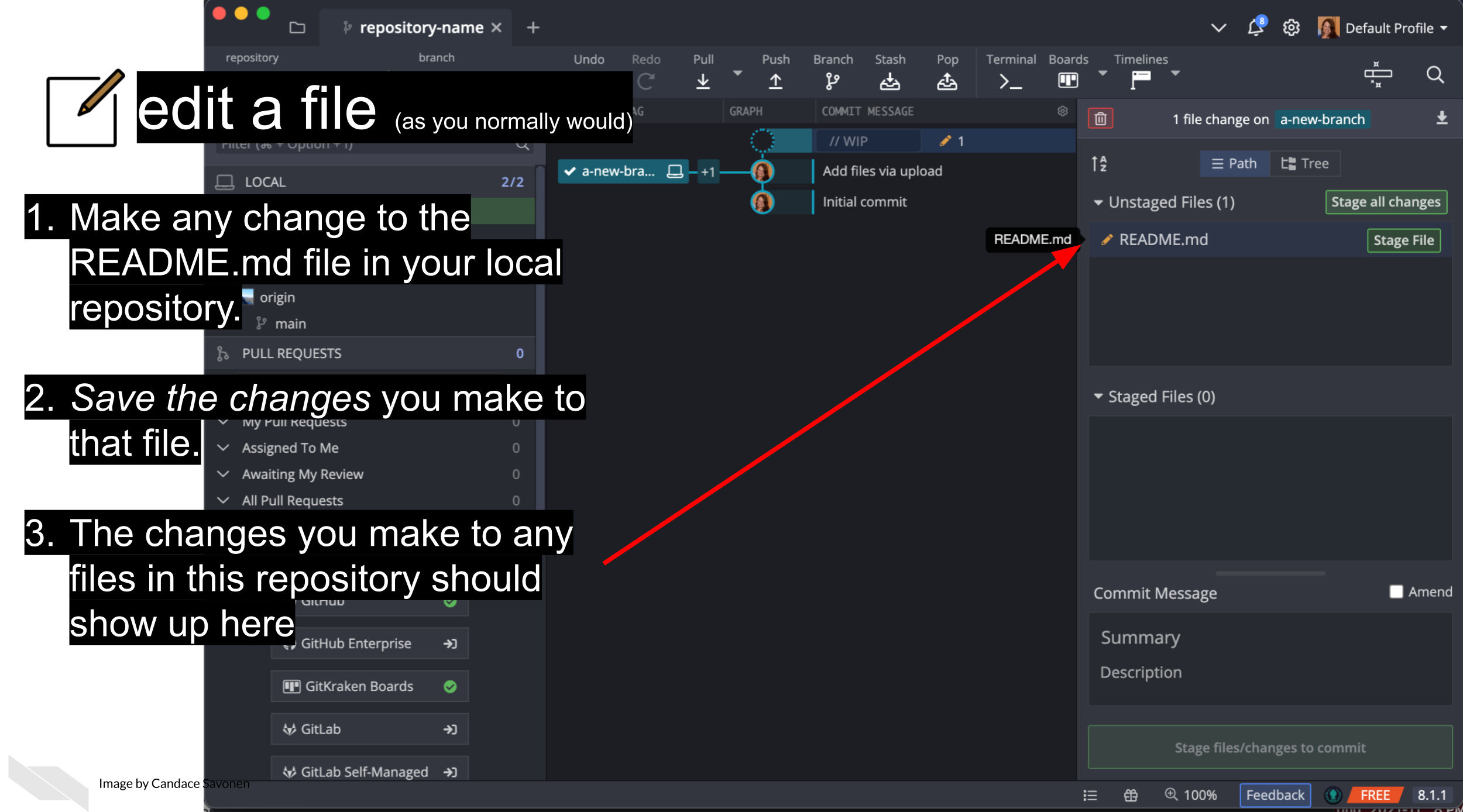
If you’ve made a change to any file in your repository, it will appear in GitKraken and you can click on it to see the differences.
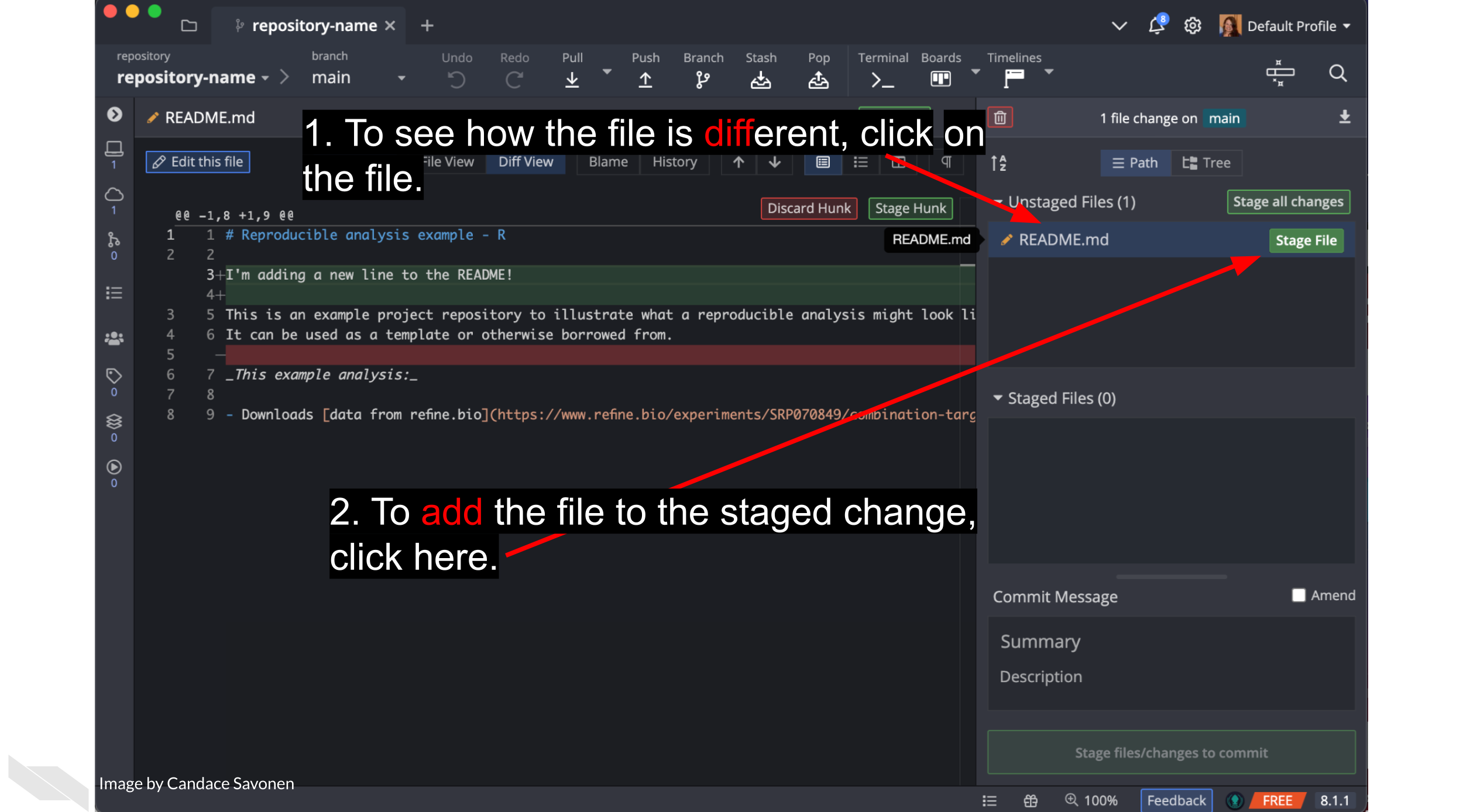
If we want to add these file changes to our current branch, we need
to commit them.
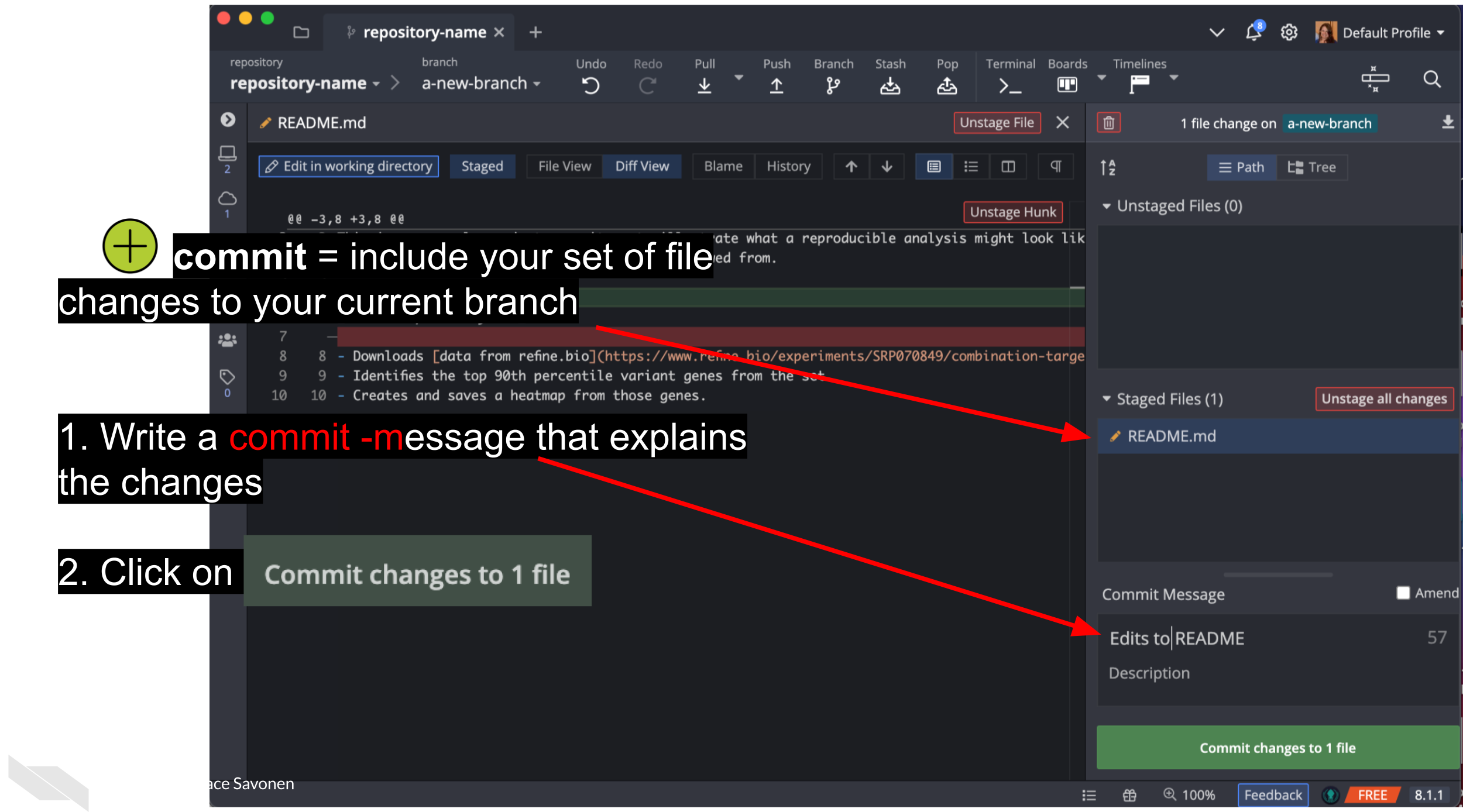
Great! Now the changes you’ve made have been added to your local branch.
4. Pushing changes
Note that when you’ve committed your changes locally (on your
computer), those changes won’t be on the online version of your
repository. To get them to the remote GitHub copy (the one on GitHub), we will need to
push your commits.
Now that we have changes committed to our branch we are ready to also add them to the remote GitHub copy!
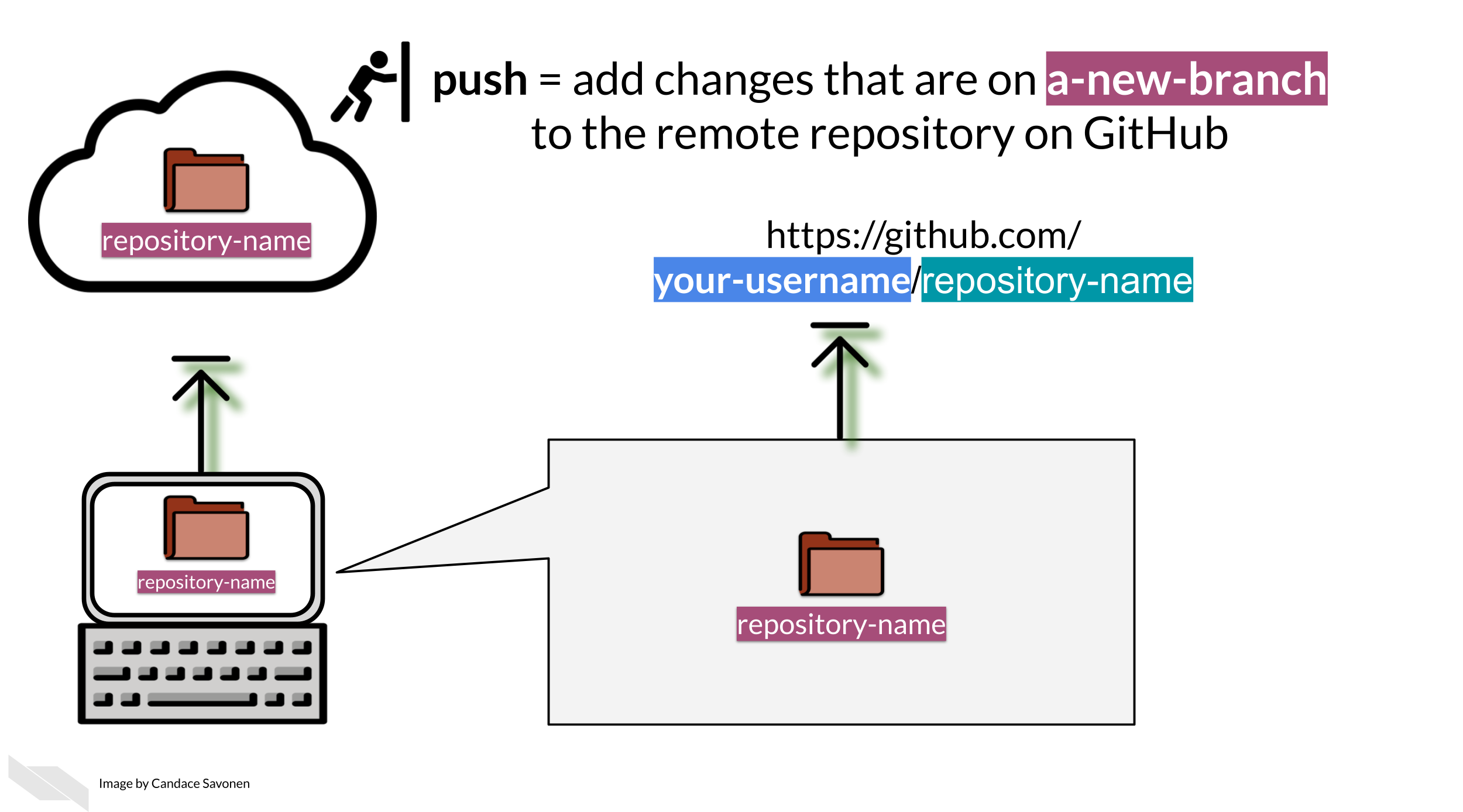
To push means to add changes that are on your new
branch to the remote branch (internet version on GitHub). The word
origin just refers to where your branch is stored on
the internet. Choose your origin in the dropdown menu and click
Submit.
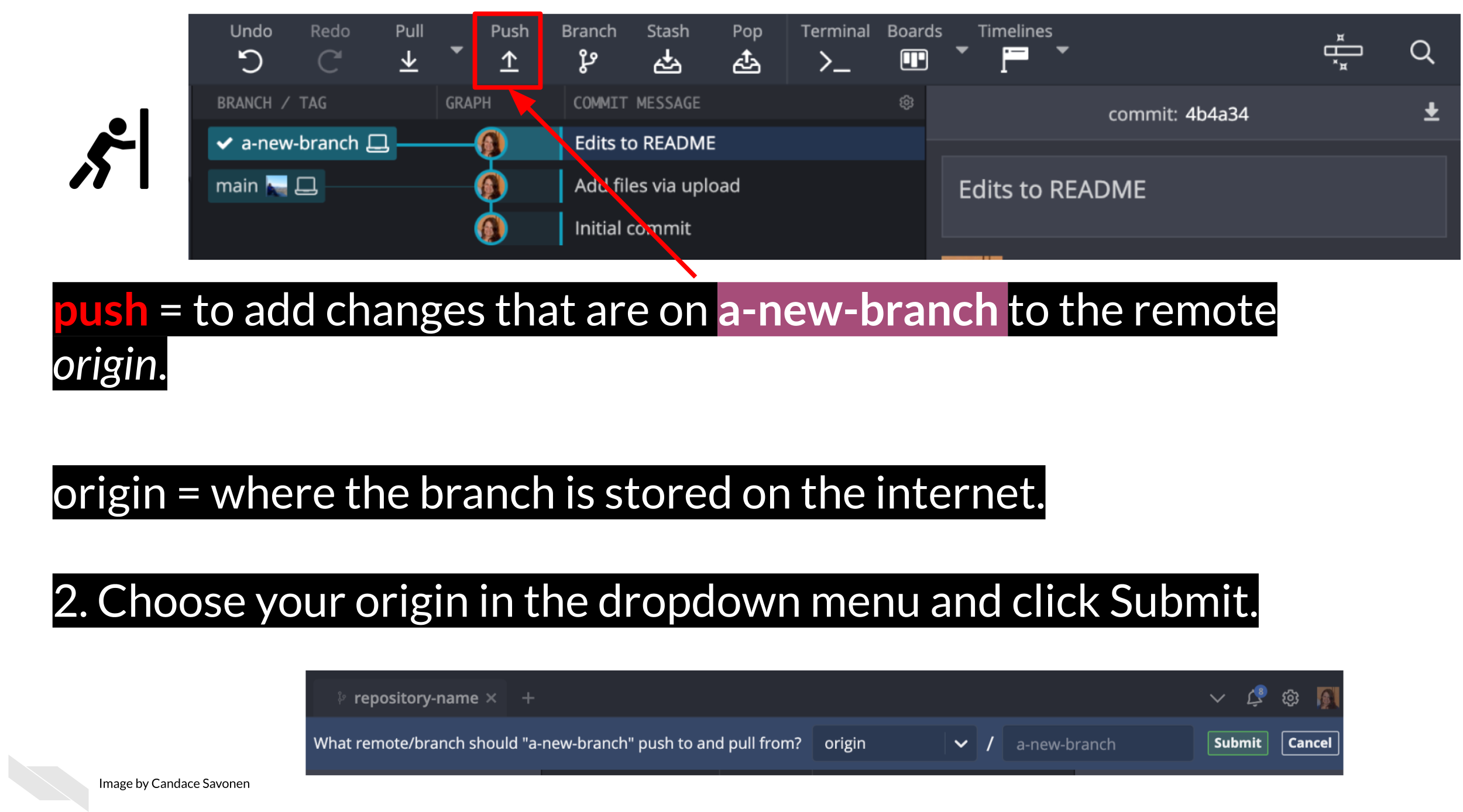
Open a pull request
After a variable number of commits, your branch, perhaps called
a-new-branch or any other new branch you might have made,
is a different version of the original code base that may have a nifty
improvement to it. But our main goal is to add that nifty improvement to
the main branch. To start this process of bringing in new
changes to the main curated repository, we will create a pull
request.
From GitHub:
Pull requests let you tell others about changes you’ve pushed to a GitHub repository. Once a pull request is sent, interested parties can review the set of changes, discuss potential modifications, and even push follow-up commits if necessary.
Pull requests are the meat of how code changes and improvements get reviewed and incorporated! A vast majority of the benefits of incorporating GitHub into your workflow centers around fully utilizing the power of pull requests!
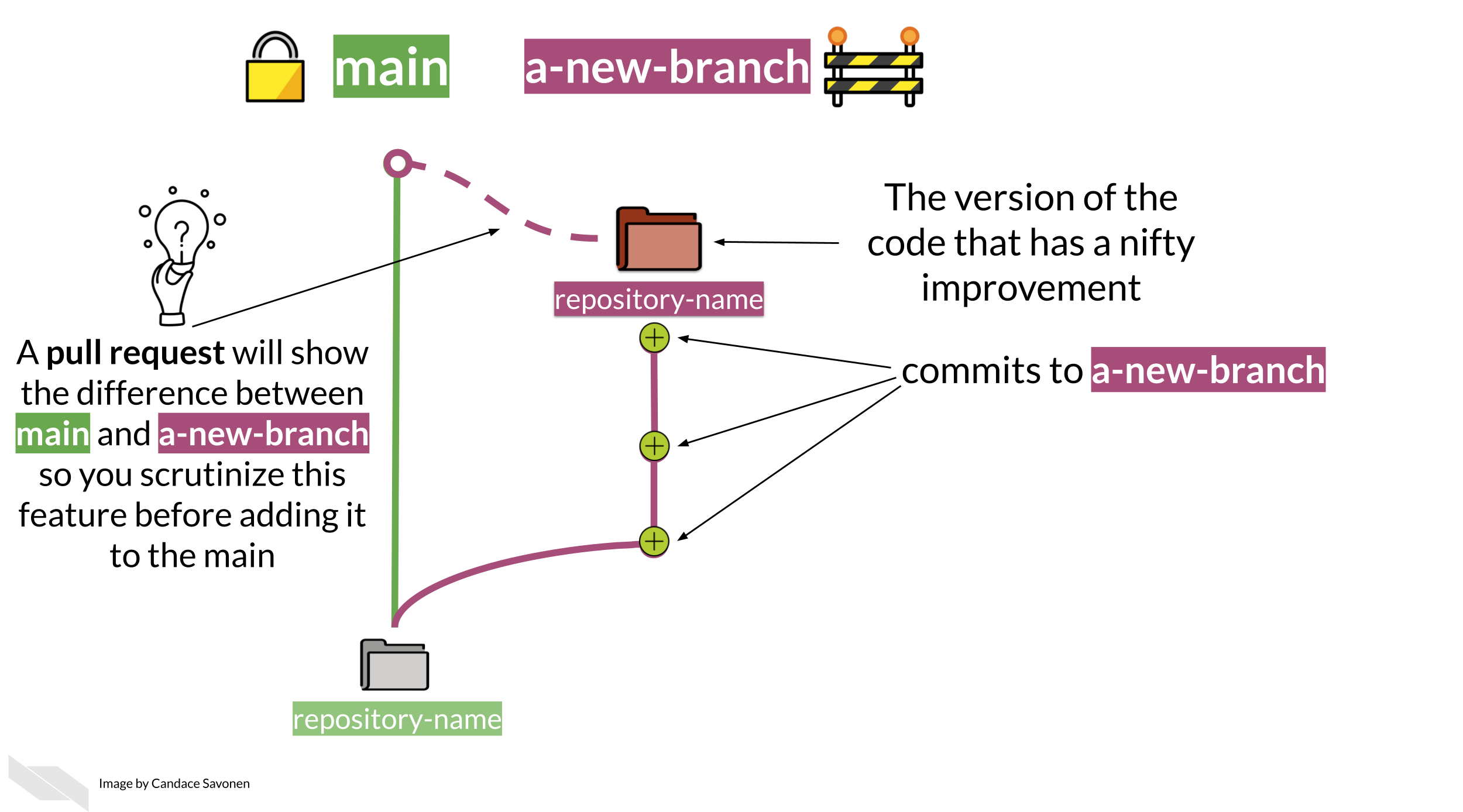
Now we can open up a pull request if we go to our GitHub repository
on GitHub. You might need to migrate back to the main page for your
repository and can do so by simply clicking on the blue name of your
repository at the top. Then you will see something like this yellow
banner message, where there is a button that says
Compare & pull request.
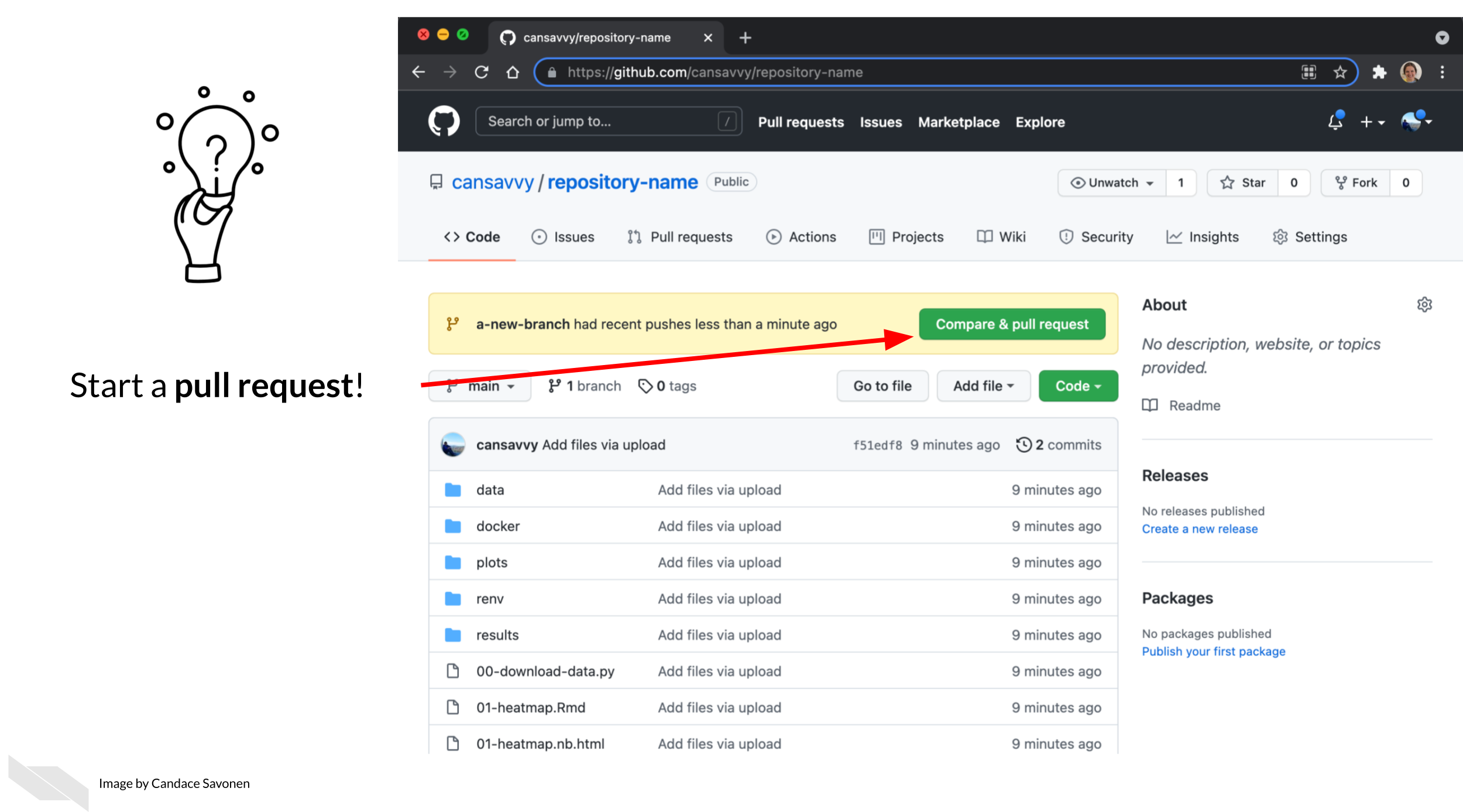
Click here if you don’t see the pull request message!!!
Note that sometimes if you have used the same branch multiple times you may need some extra steps to create a pull request. This will involve first clicking on the branch tab (which may have a different number).

Then click on the New Pull Request button for the branch
you want to work on. Be careful that is the branch you intend.

After you click on Compare & pull request you’ll be
taken to a screen where you can add information about your changes.
After you are done writing your description, click
Create Pull Request! (If you don’t have your pull request
description perfect don’t worry about it, you can always edit
it later).
Congrats! You’ve just opened a pull request! For every set of changes you’ll make to your website, you will want to follow this similar set of steps.
In summary, here are the steps involved:

OTTR Checks on pull requests
Once your pull request is open, the OTTR GitHub Actions checks will begin. These checks will generate reports as comments on your pull request.

Read these comments to begin addressing the problems with more commits to your branch.
You can adjust what checks are run by editing the
config_automation.yml file. This is further discussed in
this section about the GitHub
Actions.
If you need more information on failed GitHub actions you can scroll
to the bottom of your pull request where the status of the checks are
shown and click on Details for more information. If you are
unsure what the error message means and have trouble addressing it,
please file
an issue on the OTTR_Template repository to get help.
For more on what to put in a pull request’s description, you can read this chapter.
For more on how to review a pull request, see this chapter.
If you encounter situations where a spelling report or URL report doesn’t look as expected, you may just need to refresh the page or make another commit to your pull request.
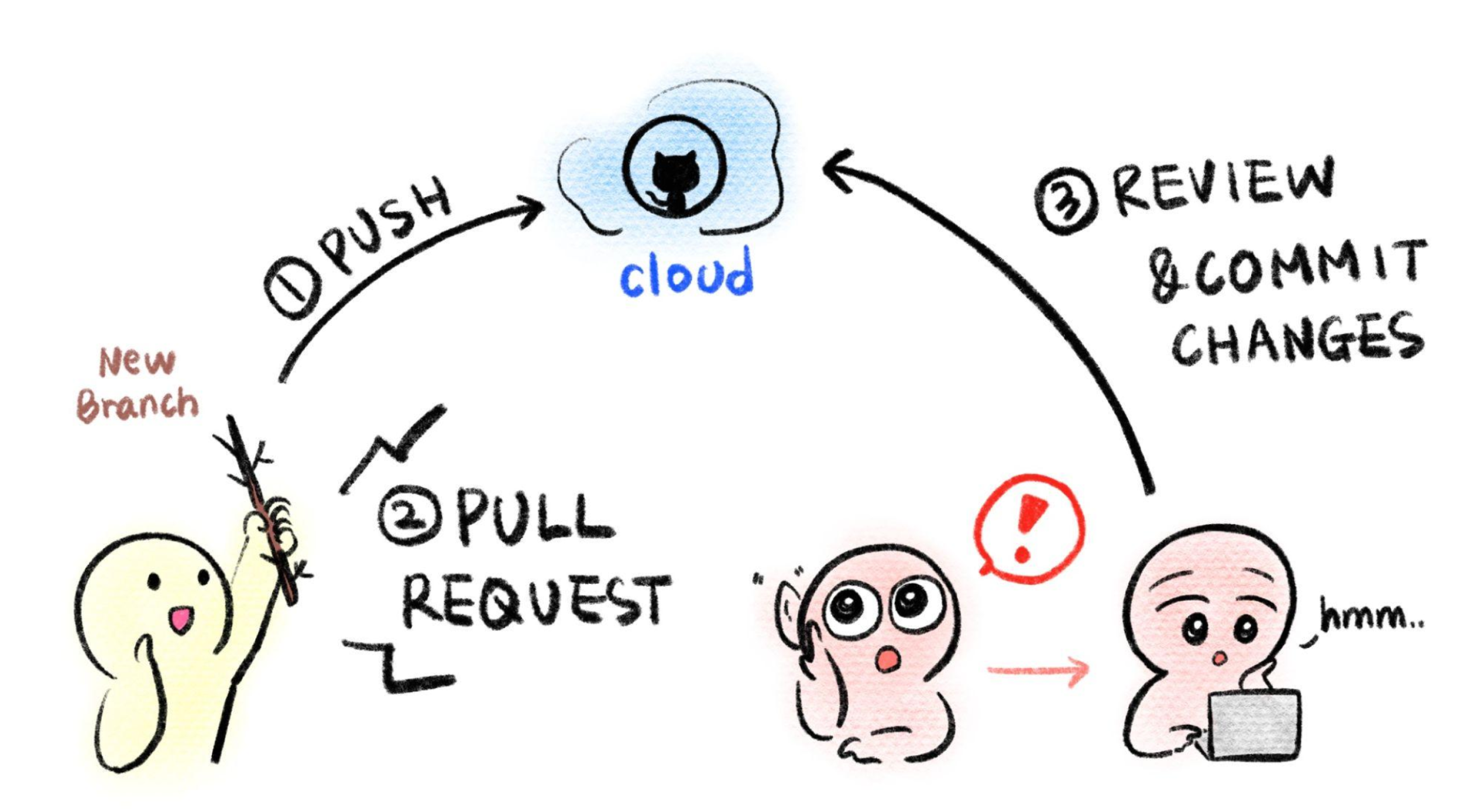
Adding new pages
Adding new chapters to your OTTR websites requires some specific steps in addition to what we’ve discussed here.
Step 1: Add a Rmd/md/quarto file
To add a new file, follow the provided instructions, ensuring that the file is named with a .Rmd extension. Additionally, make sure to add the file to your specific new branch:
- For the
Entry Level, read this to add a new file. - For the
Advanced Level, you’ll create this file locally using RStudio or a text editor of your choice and follow the steps to add, commit and push those to your new branch.
Step 2: Add the name of your new chapter to your _site.yml file
As you modify the existing pages in the template website to make them your own, you’ll need to adjust your _site.yml accordingly!
For example, at first your .yml file will look like something like this but with more pages.
When you add a new Rmd file for a new page, you will add it in the
same format you see here with a - text:,href,
and optionally a icon.
The icons you can find at https://fontawesome.com/ Additionally you can learn more about this _site.yml file from https://rmarkdown.rstudio.com/lesson-13.html
name: My cool ottr website
output_dir: '.'
navbar:
title: OTTR Web
left:
- text: Home
href: index.html
icon: fa-homeAlso in this _site.yml file you’ll find options for customizing the style of your website.
output:
html_document:
theme: cosmo
lib_dir: site_libs
self_contained: no
highlight: textmate
css: styles.css
includes:
in_header: resources/header.htmlYou can pick easy themes that will change the appearance of your website. You can go https://rpubs.com/ranydc/rmarkdown_themes to see the options.
Step 3 Commit the _site.yml file changes to the current branch
Follow the steps for how to commit changes and commit the edits to
your _site.yml file to your current branch.
Step 4 Go to your pull request to see how the checks turn out
Go to your repository and click on the Pull Request
button in the navbar.
More resources for learning GitHub
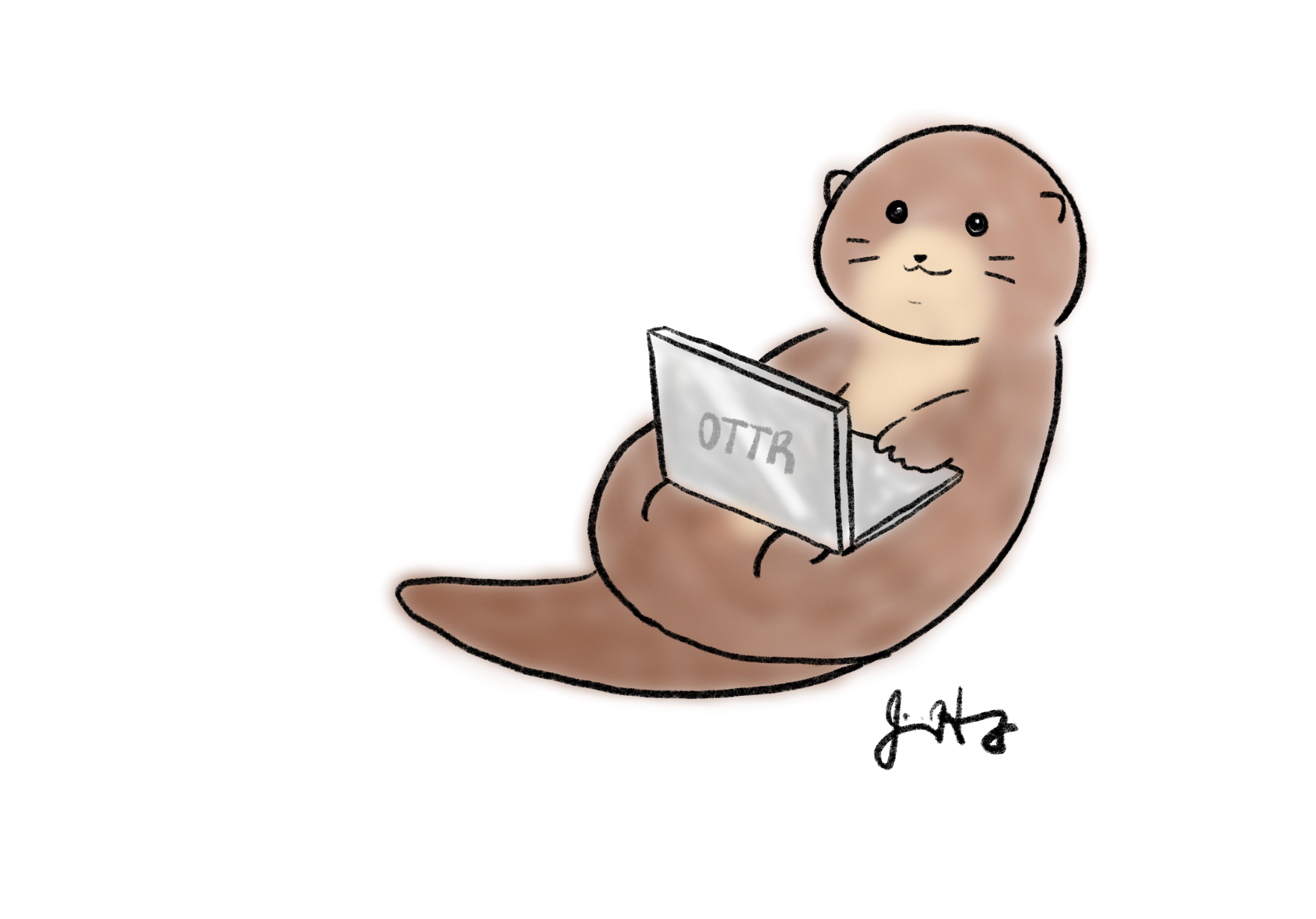
Your feedback is greatly appreciated! You can fill out this form
or file a GitHub issue.
Otter images by Jimin Hwang.
